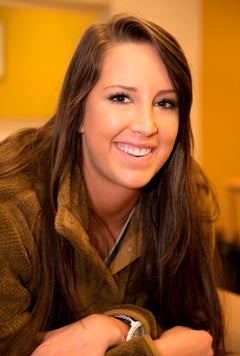Guillain-Barre Syndrome
Julia Dockery didn’t worry too much when in early January 2012 her 17-year-old daughter Miranda Hoffman came home from softball practice complaining of tingling in her toes. She just assumed her cleats were tied too tightly. The next day, Miranda said her hands felt the same way, and figured she must have caught the ball wrong. Even on the third day, when the tingling moved into her arms and legs, Miranda and Julia passed the symptoms off as a pinched nerve. But on the fourth day, when the teenager could barely walk or lift anything with her arms, Miranda and her mother realized they were dealing with an issue that needed immediate attention. Her symptoms were getting worse by the minute. Julia rushed Miranda to the doctor, who ordered Julia to take her daughter straight to the emergency room at Children’s of Alabama. His guess was that Miranda had a rare reaction to a vaccine known as Guillain-Barre Syndrome, a serious disorder that damages nerves and can cause paralysis which is generally temporary. Doctors at Children’s confirmed the diagnosis, and admitted her to the hospital. She was started on intravenous antibiotics and was told if the disease progressed as expected, she would be out of the hospital in a week. However, Miranda had developed a severe form of the disorder. It gradually began to affect the nerves to her diaphragm and chest. She had to be put on a ventilator to help her breathe, and was given morphine to ease her pain. She dropped 30 pounds as she lay still in the hospital bed. “All I had of her was her eyes,” Julia recalls. “She had to communicate with me somehow, so I made up a sheet that we used.” Miranda’s condition was getting progressively worse, but Julia and the medical team at Children’s did not lose hope. Finally, about a month after being admitted to the hospital, Miranda’s health began to turn around. She slowly regained feeling and mobility in her arms and legs, and was taken off the ventilator. She began receiving therapy to build up her strength to walk again. More than two months after being admitted to the hospital, Miranda was discharged. It has been a year since Miranda was hospitalized and her recovery is astounding. Children’s was there to help her through each step of the way. She still has some occasional pain and is tentative about jumping fully back into a full range of physical activities. But her will is admirable, Julia says. “Guillain-Barre affects everyone different,” she says. “Miranda was determined. When her body awakened, she just stayed strong and kept the faith.”







